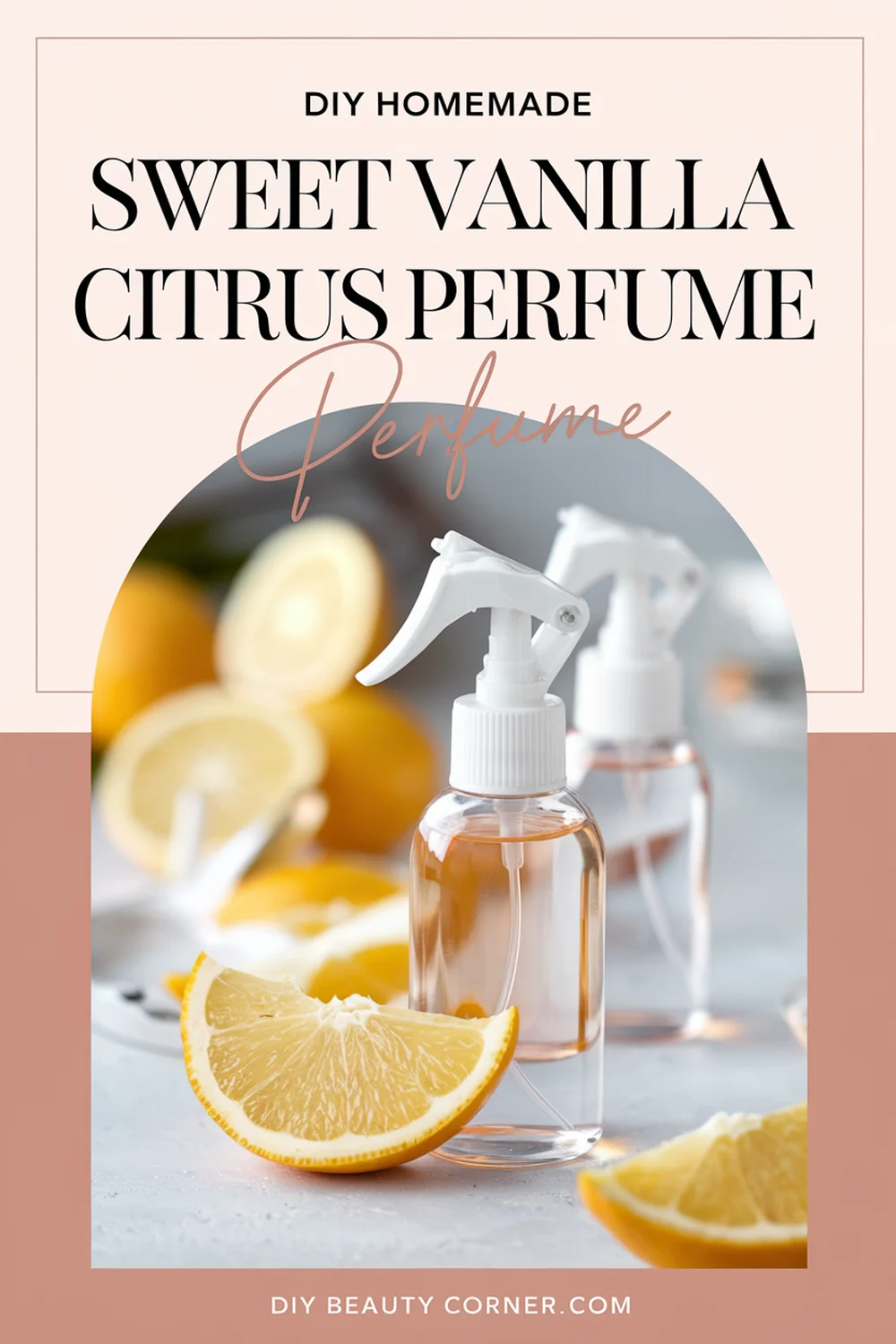
Creating your own fragrance at home can be a delightful and fulfilling experience, especially when it involves the sweet and refreshing essence of vanilla and citrus. I’m excited to share an easy homemade recipe that captures that perfect blend, allowing you to enjoy a unique scent tailored to your personal taste. This simple recipe not only lets you customize your fragrance but also provides a beautiful, natural alternative to store-bought perfumes.
In this blog post, I will guide you through the steps to craft a Sweet Vanilla Citrus Perfume using easily accessible ingredients. From selecting essential oils to mixing your blend, I’ll provide clear measurements and tips to ensure your perfume turns out just right. Whether you’re looking to elevate your scent collection or create a thoughtful gift, I believe you’ll find this process both enjoyable and rewarding.
Crafting Your Sweet Vanilla Citrus Perfume
Creating a homemade Sweet Vanilla Citrus perfume is an enjoyable process that allows for personalization while ensuring freshness. This recipe balances the warm, comforting notes of vanilla with the bright, zesty aromas of citrus, resulting in a delightful fragrance perfect for any occasion.
Gathering High-Quality Ingredients
To craft this signature scent, I focus on using high-quality essential oils and a suitable carrier oil. The essential oils include:
- 15 drops vanilla essential oil: This forms the warm base of my fragrance.
- 10 drops sweet orange essential oil: This adds a bright, uplifting note.
- 5 drops bergamot essential oil: I use this for its fresh and slightly floral aspect.
- 3 drops lemon essential oil: This contributes an invigorating twist.
I choose 2 tablespoons of jojoba oil or fractionated coconut oil as my carrier, which dilutes the essential oils, allowing them to blend effectively while being gentle on the skin. It’s essential to ensure all ingredients are pure and high-quality to achieve the best scent.
Understanding Perfume Notes
In perfume formulation, understanding notes is crucial. I find that perfume is generally composed of three layers: top, middle, and base notes.
- Top notes: Here, I primarily use sweet orange and lemon. They provide an immediate burst of freshness and are the first scents perceived.
- Middle notes: Bergamot sits in this layer, offering a bridge between the top and base notes, creating harmony in the fragrance.
- Base notes: Vanilla holds this category, giving depth and longevity to the fragrance, ensuring that it lingers pleasantly on the skin.
Recognizing these layers helps me balance my blend effectively.
Mixing and Safety Tips
When I mix my ingredients, I take care to follow safe practices. Here’s my process:
- Mix the essential oils first: I combine the essential oils in a small glass container.
- Add the carrier oil: I then incorporate the carrier oil, ensuring a smooth blend.
- Storage: I recommend transferring the mixed perfume to a dark glass bottle, which protects it from light and extends its shelf life.
For safety, I perform a patch test on a small area of skin to check for any adverse reactions. It’s essential to avoid direct sunlight on the applied area, as some citrus oils can increase photosensitivity. Keeping these tips in mind ensures a pleasant and safe experience while crafting my perfume.
Storing and Using Your Perfume
Properly storing and applying your homemade sweet vanilla citrus perfume ensures that you enjoy its delightful scent for as long as possible. The right container will help maintain its integrity, while effective application techniques will enhance the fragrance’s longevity on your skin.
Choosing the Right Container
I recommend using dark glass bottles to store homemade perfume. Dark colors help protect essential oils from light, which can degrade their quality over time. A 10 ml or 30 ml spray bottle is ideal for easy application.
Make sure the bottle has a tight-sealing cap to prevent air exposure. Exposure to air can affect the fragrance’s character. I often label my bottles with the ingredients and date to keep track of freshness.
For convenience, consider using rollerball applicators. They allow for precise application on pulse points, optimizing the scent’s impact.
Application Techniques for Lasting Scent
To maximize the fragrance of my vanilla citrus perfume, I follow specific application techniques. I apply the perfume to pulse points, such as my wrists, behind my ears, and at the base of my throat. These areas produce warmth, which enhances the scent.
After applying, I typically avoid rubbing my wrists together. This can break down the fragrance molecules, diminishing the scent. Instead, I let it dry naturally to maintain its integrity.
To refresh the scent throughout the day, I carry a small 10 ml bottle in my bag. Just a quick spritz on pulse points can revive the fragrance without overwhelming it.


